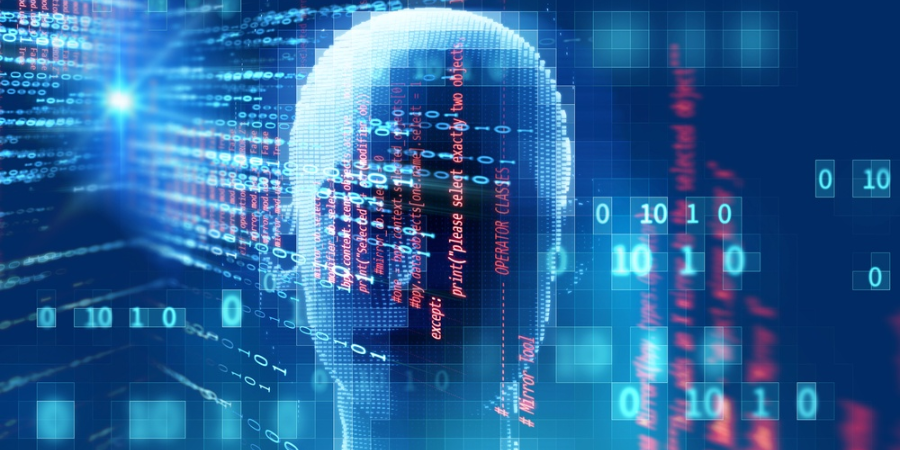Python has emerged as a powerhouse, playing a pivotal role in shaping and advancing the field of AI. In this blog post, we will explore the significance of Python in the era of AI and the reasons behind its widespread adoption.
Python's Simplicity Fuels AI Innovation
Python's simple and readable syntax is a key factor that has contributed to its popularity, especially in the context of AI development. AI projects often involve complex algorithms, intricate models, and extensive datasets. Python's readability not only makes the code more understandable for developers but also facilitates collaboration within multidisciplinary teams, including data scientists, engineers, and domain experts.
Extensive Libraries and Frameworks
Python boasts an extensive collection of libraries and frameworks specifically designed for AI and machine learning. Libraries such as NumPy, Pandas, and SciPy provide robust support for scientific computing, data manipulation, and analysis. Additionally, frameworks like TensorFlow and PyTorch have become the backbone of deep learning applications, allowing developers to build and train intricate neural networks with relative ease.
The availability of these tools significantly accelerates the development process, enabling AI practitioners to focus on refining algorithms and improving models rather than getting bogged down by low-level implementation details.
Open Source and Community Collaboration
Python's open-source nature encourages collaboration and knowledge-sharing within the global developer community. The collaborative spirit has led to the creation of a vast ecosystem of AI-related packages, modules, and resources that are freely accessible to developers worldwide. This collaborative environment fosters innovation and allows developers to leverage the collective intelligence of the community for solving complex AI challenges.
Python has a large and active community of developers, data scientists, and researchers. The community's collaboration and contributions lead to the creation of new libraries, frameworks, and solutions, fostering innovation in the AI space.
Integration Capabilities
AI projects often require integration with existing systems and technologies. Python's versatility shines in this aspect, as it seamlessly integrates with other languages like C and C++, making it easier for developers to incorporate AI functionalities into diverse software environments. This interoperability enhances Python's appeal for businesses looking to adopt AI without disrupting their existing infrastructure.
Python's versatility allows developers to use it for various purposes beyond AI, including web development, automation, and scripting. This versatility makes it easier to integrate AI components with other parts of a project or system.
Future-Proofing with Python
As AI continues to evolve, Python remains at the forefront of this technological revolution. Its adaptability and continuous development ensure that it stays aligned with emerging trends and innovations in the AI space. Choosing Python for AI development is not just a current trend; it's a strategic decision to future-proof projects and remain agile in a rapidly changing technological landscape.
Benefits and Advantages
Python plays a crucial and indispensable role in the era of Artificial Intelligence (AI), offering a range of benefits and advantages that contribute to its widespread adoption in AI development. Here are key reasons why Python is so integral to AI:
1. Ease of Learning and Readability:
Python's syntax is clear, simple, and readable. This makes it accessible to beginners and experts alike. The ease of learning accelerates the onboarding process for new developers and researchers entering the AI field.
2. Rich Ecosystem for Data Science:
Python has a rich ecosystem of libraries and tools for data science and machine learning. Libraries like NumPy, Pandas, Matplotlib, and Scikit-learn facilitate data manipulation, analysis, visualization, and machine learning model development.
3. Open Source and Cost-Effective:
Python is open source, meaning it is freely available, and its source code can be modified and redistributed. This reduces development costs and promotes the sharing of knowledge and solutions within the community.
4. Compatibility with Big Data Technologies:
Python seamlessly integrates with big data technologies, such as Apache Spark. This compatibility enables AI applications to process and analyze large datasets efficiently, making it suitable for big data and machine learning tasks.
5. Consistent Tools for Research and Production:
Python is widely used in both academic research and industrial applications. The consistency of tools and libraries used in both settings facilitates the transition of research prototypes into production-ready applications.
6. Support from Tech Giants:
Many major tech companies, including Google, Facebook, and Microsoft, use Python for AI research and development. This support ensures ongoing development, improvements, and optimizations for Python-based AI tools and frameworks.
7. Availability of Pre-trained Models:
Python facilitates the use of pre-trained models and transfer learning, allowing developers to leverage existing models and frameworks for various tasks. This accelerates the development process and reduces the need for training models from scratch.
8. Community-driven Education Resources:
The Python community provides a wealth of educational resources, tutorials, and documentation for AI and machine learning. This abundance of learning materials supports individuals seeking to acquire AI skills.
Industry Adoption and Job Opportunities
The widespread adoption of Python in the AI domain has led to a surge in demand for Python developers with AI expertise. Many organizations prefer Python for AI projects due to its efficiency, versatility, and the availability of skilled professionals. Learning Python, therefore, opens up a plethora of job opportunities in the thriving field of AI, making it a valuable skill for aspiring and seasoned developers alike.
Python has experienced widespread adoption across various industries due to its versatility, ease of use, and extensive libraries. The language's flexibility makes it suitable for a wide range of applications, from web development to data science, machine learning, artificial intelligence, automation, and more. As a result, the demand for Python skills has grown significantly, leading to abundant job opportunities in various sectors. Here's an overview of industry adoption and job opportunities in Python:
1. Web Development:
• Python is widely used in web development frameworks such as Django and Flask.
• Companies use Python to build scalable web applications, APIs, and backend systems.
• Job roles: Python Developer, Web Developer, Backend Developer.
2. Data Science and Analytics:
• Python is the go-to language for data scientists and analysts.
• Libraries like NumPy, Pandas, Matplotlib, and Seaborn support data manipulation, analysis, and visualization.
• Job roles: Data Scientist, Data Analyst, Business Analyst.
3. Machine Learning and Artificial Intelligence:
• TensorFlow and PyTorch, both Python-based, are major frameworks for machine learning and deep learning.
• Python is used for developing and deploying AI models in various industries.
• Job roles: Machine Learning Engineer, AI Developer, Computer Vision Engineer.
4. Scientific Computing and Research:
• Python is widely used in scientific research for its simplicity and readability.
• Libraries like SciPy and scikit-learn support scientific computing and machine learning applications.
• Job roles: Research Scientist, Computational Biologist, Computational Physicist.
5. Finance and Fintech:
• Python is employed for quantitative analysis, risk management, algorithmic trading, and financial modelling.
• Libraries like NumPy and Pandas are popular for data analysis in finance.
• Job roles: Financial Analyst, Quantitative Analyst, Financial Software Developer.
6. Healthcare and Biotechnology:
• Python is used for analysing medical data, genomics, and bioinformatics.
• The simplicity of Python makes it accessible to researchers in the healthcare and biotech sectors.
• Job roles: Bioinformatician, Computational Biologist, Healthcare Data Analyst.
7. Automation and Scripting:
• Python's scripting capabilities make it a preferred language for automation and scripting tasks.
• Automation of repetitive tasks is common across industries.
• Job roles: DevOps Engineer, Automation Engineer, Scripting Developer.
8. Game Development:
• Python is used in the gaming industry for scripting, prototyping, and backend development.
• Libraries like Pygame support game development.
• Job roles: Game Developer, Scripting Developer.
9. Education and Training:
• Python is often the first programming language taught in universities and coding bootcamps.
• Educators use Python for its readability and versatility.
• Job roles: Educator, Python Instructor, Curriculum Developer.
10. Consulting and Freelancing:
Python developers often work as consultants or freelancers, offering their expertise to various clients and projects. - Job roles: Freelance Python Developer, Python Consultant.
Conclusion
In conclusion, Python's prominence in the era of AI is not a mere coincidence but a testament to its suitability and effectiveness in addressing the unique challenges posed by artificial intelligence projects. Its simplicity, extensive libraries, open-source ethos, integration capabilities, and the thriving community have positioned Python as the language of choice for AI development. As businesses continue to harness the power of AI for innovation and efficiency, Python will undoubtedly play a central role in shaping the future of artificial intelligence.
Python's extensive libraries, ease of learning, community support, versatility, and compatibility with other technologies contribute to its indispensable role in the development and deployment of Artificial Intelligence applications, offering numerous benefits and advantages to developers, researchers, and organizations.
Python's broad adoption across industries has led to a diverse range of job opportunities. Individuals with Python skills can find roles in traditional software development, emerging technologies like AI and machine learning, and interdisciplinary fields such as healthcare and finance. As technology continues to evolve, the demand for Python developers is likely to remain high. Continuous learning and staying updated with the latest trends in Python and related technologies can further enhance career prospects in this dynamic field.
Prof. Nitya Khare
(CSE, SIRTE)



